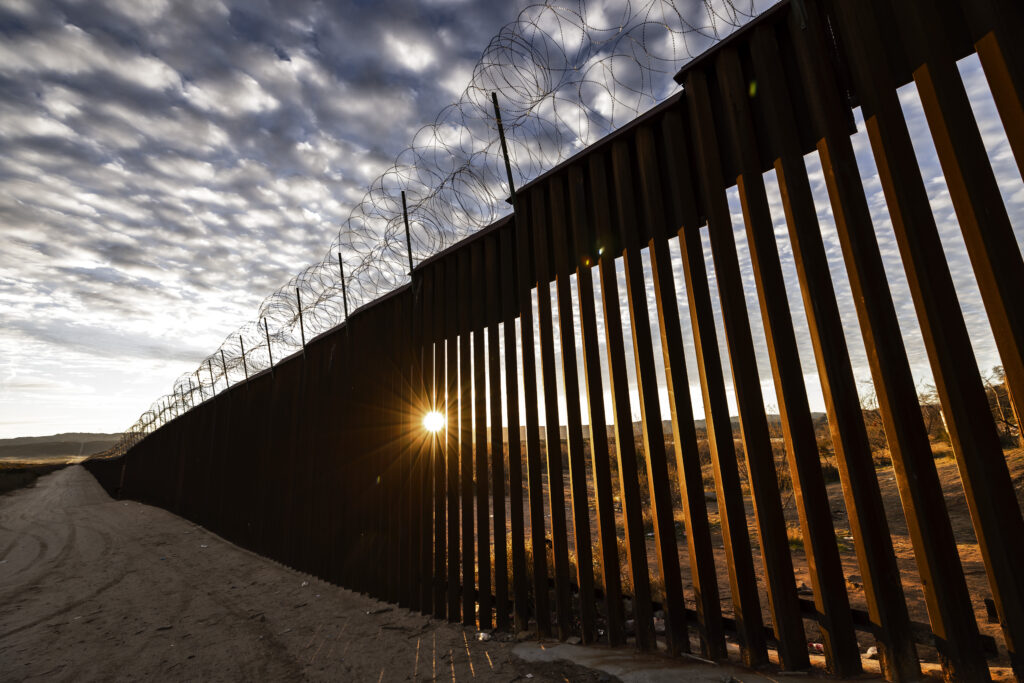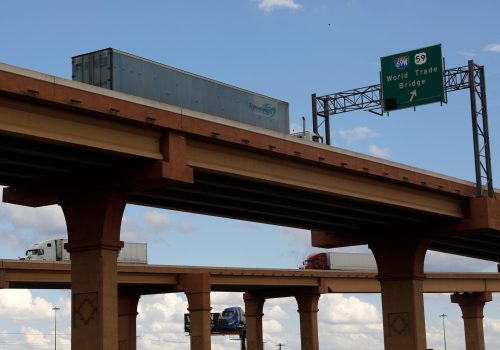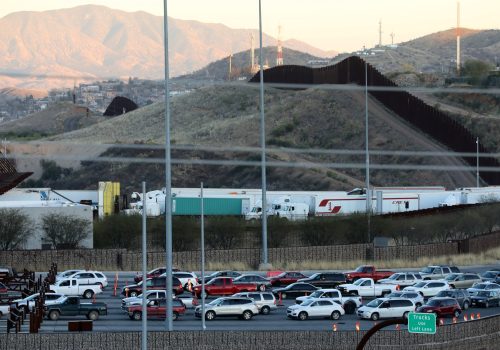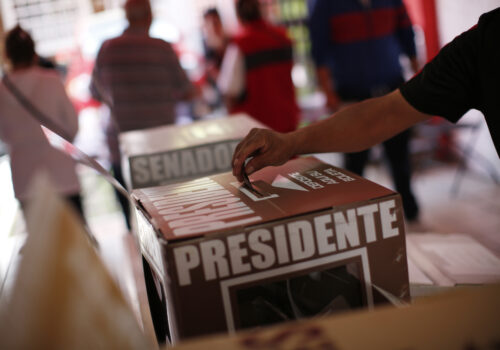With US President Joe Biden and former US president (and current candidate) Donald Trump both scheduled to visit the southern border on Thursday, the spotlight is once again on the United States’ immigration policies. But it is an issue that extends well beyond the US-Mexico border. In 2023, a record 520,000 people crossed the treacherous jungle between Colombia and Panama known as the Darién Gap, more than double the number reported the year before, according to figures from the government of Panama. This figure highlights the critical need for comprehensive policies in the United States and in the region that not only ensure citizen and border security but also address migration as part of a broader, interconnected security challenge in the Western Hemisphere, spotlighting the pivotal role of the countries that migrants traverse.
Most immigrant traffic to the United States goes through and comes from Latin America. A lack of economic opportunities, climate vulnerabilities, political instability, and the pervasive influence of organized crime are often cited as push factors for these migrants. However, recent migration patterns also reveal a diversification of nationalities at the US southern border, underscoring the global nature of the challenge. In addition to regional events such as the collapse of Venezuela, political instability in Haiti, violence in Ecuador, and the ongoing and unrelenting crackdown in Nicaragua, conflicts such as Russia’s invasion of Ukraine and the war in the Middle East are also fueling the migration crisis. Most migrants at the US southern border in recent years originated in Mexico, El Salvador, Guatemala, and Honduras. However, despite the persistent conception of most migrants coming from Central America, in December, more than half of migrant encounters at the US-Mexico border involved citizens of other countries, such as Russia, India, Brazil, Afghanistan, Romania, Turkey, and others.
As such, Latin American countries and the United States should work together to develop and implement policies and strategies that address the driving causes of migration that are specific to the region and mitigate the region-wide risks of such a large migrant flow—much of which now comes from outside the region.
Specifically, the United States should work with the countries originating high numbers of migrants to improve conditions and thus prevent the need for people to leave their countries—whether from Latin America and the Caribbean or other parts of the world. That starts with a holistic security strategy to address the challenges of human, drug, and arms trafficking. Supporting local economic growth and human capital development, employing climate change mitigation and adaptation programs, and fostering coordinated, multifaceted responses to the drug supply chain would create a more secure hemisphere and decrease the number of people fleeing violence.
Additionally, the United States needs to recognize that its current policies aimed at deterring migration are ineffective and often harmful. The hardline policies that were put in place by the Trump administration and have largely been continued by the Biden administration have done little to nothing to curb migration flows. At the US-Mexico border, migration crossings have hit a record high, with more than three hundred thousand Border Patrol encounters with migrants in December. This context demands a reevaluation of current strategies aimed at deterring migration.
Instead of continuing its failed effort at deterrence, Congress should focus on developing humane, legal pathways to migration, recognizing pull factors in the United States, which will decrease the frequency of irregular migration. A straightforward recommendation is for clear, realistic timelines for US judges to expeditiously deliver decisions on asylum cases.
The United States should not take on all of the burden. There are opportunities to work in the region and support regional partners on integrating displaced migrants in third countries, from the region or from other parts of the world, to help alleviate the migration flow to the US border. A new report by the Atlantic Council also puts forward the idea of the United States supporting a regional task force “with the goal of jointly addressing the factors behind irregular migration and insecurity.” The idea builds on the existing work of countries such as Costa Rica and Panama, which are working hand in hand to establish more streamlined, efficient, and unified border crossings. Last week, these two countries, with the assistance of the Inter-American Development Bank, inaugurated a one-of-a-kind border facility. Building on the Atlantic Council’s recommendation for a regional task force to address these challenges, the United States, Mexico, and Guatemala are already moving in this direction. The three nations have just “committed to establish an operationally focused trilateral working group aimed at enhancing security, law enforcement processes, and infrastructure along their international borders”—a concrete manifestation of a collaborative approach to solving regional challenges.”
Migration and security are inherently interlinked issues, and the urgency for a collaborative, multifaceted approach to both cannot be overstated. The United States must work with and support other countries in the hemisphere to holistically mitigate the root causes of migration and create safer conditions for citizens across the region.
María Eugenia Brizuela de Avila is a nonresident senior fellow with the Atlantic Council’s Adrienne Arsht Latin America Center and a former minister of foreign affairs of El Salvador.
Further reading
Mon, Feb 27, 2023
Beyond the US-Mexico border: Destination of final goods, environmental impact, and future scenarios for border relations
Issue Brief By
Three complementary analyses on the value and final destination of northbound commercial trade flows; the environmental impact of idling vehicles at the US-Mexico border; and three potential scenarion for the future of US-Mexico relations.
Fri, Feb 17, 2023
The transformative power of reduced wait times at the US-Mexico border: Economic benefits for border states
Report By
Atlantic Council's new data shows that a mere 10-minute reduction in wait times – without any additional action – can create thousands of Mexican jobs, grow the gross domestic product (GDP) of several Mexican states, and generate hundreds of thousands of dollars in new spending in the United States.
Mon, Jan 22, 2024
With elections in Mexico and the US, 2024 is a pivotal year for North American trade
New Atlanticist By Luz María de la Mora
The leaders elected in Mexico on June 2 and in the United States on November 5 will be responsible for conducting an important review of the USMCA in 2026.
Image: Mexican immigration officials along with the Mexican National Guard (Guardia Nacional) attempt to thwart illegal immigration crossing in to Southern California. The Jacumba Valley in Southern California is an isolated desert area which makes the crossing easy to accomplish. Coyote human smugglers charge from $11,000-$25,000 per person to illegally cross from Mexico, often based on country of origin. Many of those who now cross in to the US are classified as OTMs (other than Mexican) by the US Border Patrol. US/Mexico border fence. 1/05/2024 Jacumba Valley, California, USA Photo by Ted Soqui/SIPA USA.



